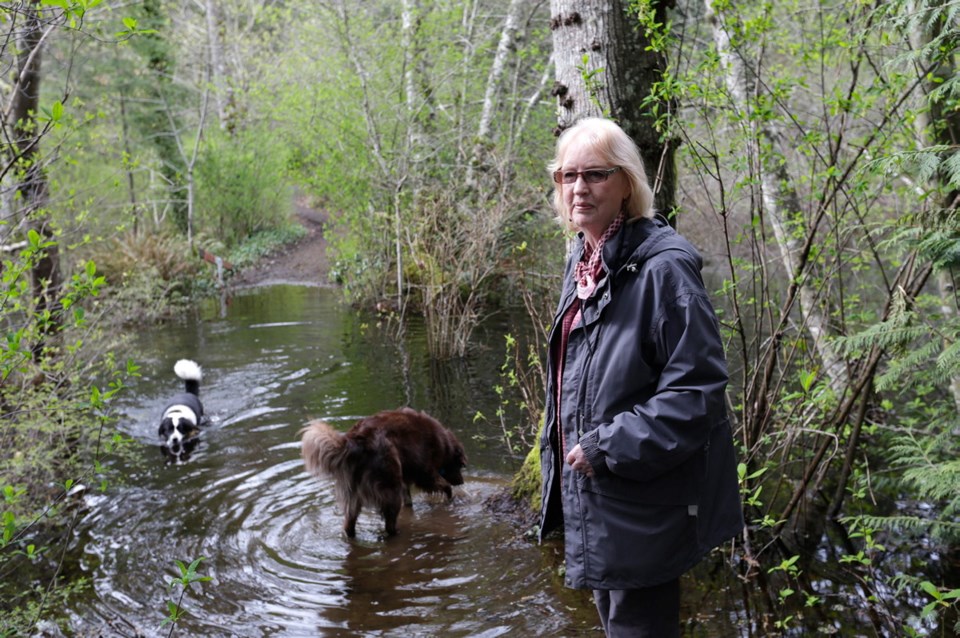Beavers are being blamed for considerable flooding of fields and forest at the park named for them, and people who live nearby want the Capital Regional District to rectify the situation.
The CRD has asked the province for permission to remove beaver dams that are blocking culverts and causing flooding at Elk/Beaver Lake Park in Saanich.
Only one beaver has been spotted, but more might be responsible for the flooding, said Larisa Hutcheson, senior manager with CRD Environmental Services.
This is the first time in the regional park’s history that beavers are causing enough problems to warrant intervention, Hutcheson said.
But nothing will be done this early in the spring, because it could put young beavers at risk. The usual time for disassembling beaver dams is June 15 to Sept. 15, Hutcheson said.
The root of the problem is a culvert that is supposed to drain water at the south end of the lake. The culvert, which passes under a path, is blocked by wood debris.
The resulting backup of water has flooded an area known as the retriever field, as well as other nearby grassy areas.
The culvert has been cleared numerous times in the past, but the beavers just rebuild their dam, said park neighbour Anne Mayhew, who can’t remember ever seeing so much flooding. “If they don’t do something within the year, the park will really change and it will cost a lot to get it back [to the way it was],” Mayhew said.
Mayhew said she has been told that the beavers have been getting in behind the weir and plugging the culvert to grow the pond system into a lake.
“I don’t have to do a thing and I’ll have waterfront property before long,” she said.
CRD staff might have to trap and relocate the animals, Hutcheson said.
“We are also working with consultants to create a system of baffles to put in the culvert, which will help to [prevent] a dam being constructed there in the future.”
According to the provincial Environment Ministry, beavers live in colonies of three to nine individuals, typically with adults, yearlings and kits.
Usually, there is a pair of adults as well as one or two generations of their offspring. However, in some places, a colony may comprise only one beaver or a pair of beavers.
A colony uses one or more lodges or burrows and will build at least one dam to get access to vegetation — their food — over winter.
Active beaver systems are not permanent. They are abandoned after available food sources are exhausted, usually within two or three years.



